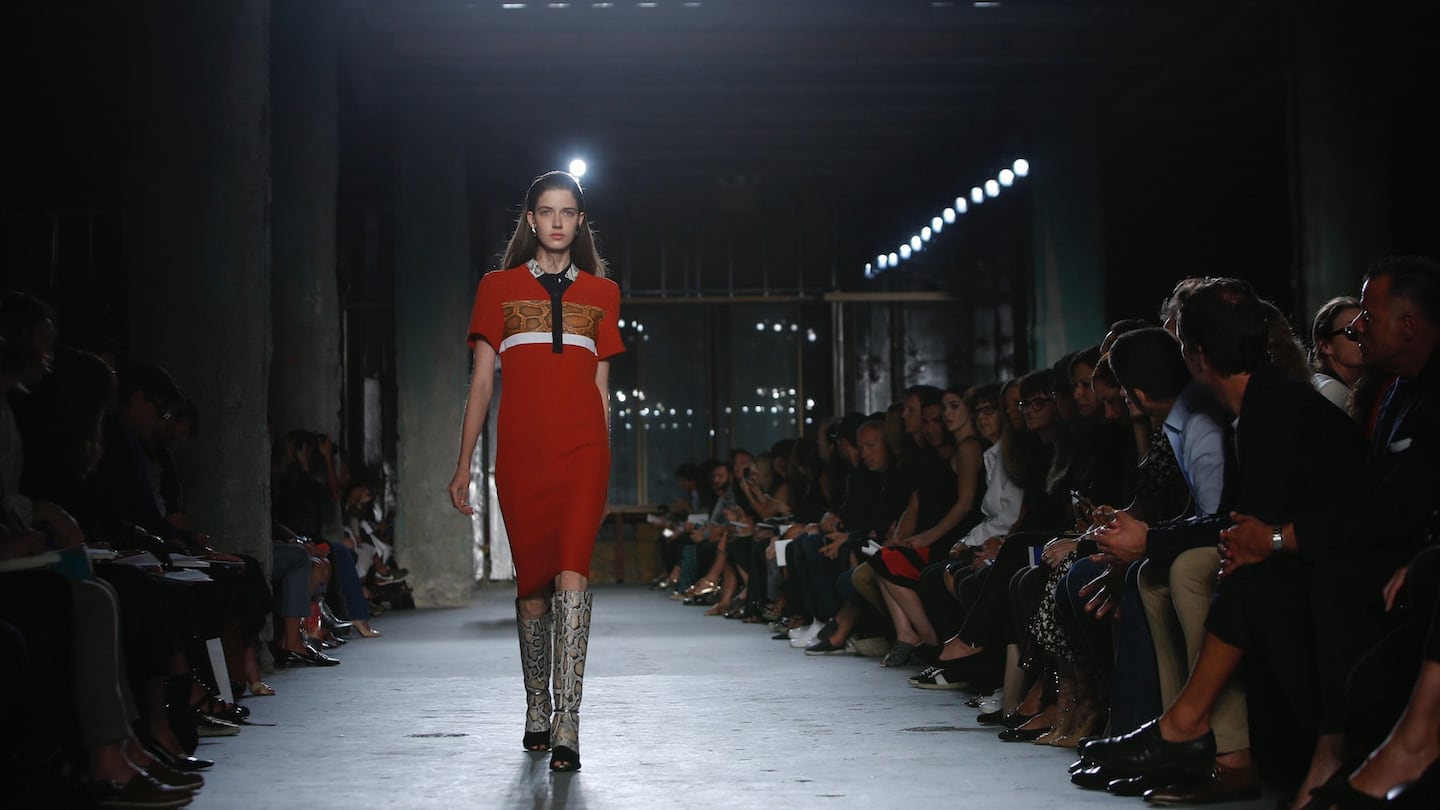
The Business of Fashion
Agenda-setting intelligence, analysis and advice for the global fashion community.

Agenda-setting intelligence, analysis and advice for the global fashion community.

NEW YORK, United States — Today, the two biggest problems in the global modelling industry are the sexual harassment and financial exploitation of models. The industry's multi-level employment structure between models, agencies, and clients creates no clear "employer" under current rules and laws, often leaving models without adequate workplace protections against these abuses.
Sexual harassment
In a 2012 Model Alliance study of working female models, 30 percent of respondents reported experiencing “inappropriate touching” on the job and 28 percent said they had been pressured to have sex at work. Additionally, 87 percent of respondents had been asked to pose nude at a job or casting without prior notice. Of those who had experienced sexual harassment, only 29 percent reported it to their agencies; of those who did report harassment to their agencies, the vast majority indicated that their agencies did not see the problem. Some models even reported that their agents encouraged them to sleep with their harassers to further their careers.
Most modelling agencies and clients in New York hold that models are “independent contractors”, rather than employees. Under current federal and New York State law, independent contractors are not afforded the same protection from sexual harassment in the workplace as employees (the same is true of wage and hour protections). And, although New York City law protects independent contractors against sexual harassment, because of the multi-level structure of hiring in the modelling industry, the City law generally does not apply to models either. This means that when a model is sexually harassed or has her wages stolen, she has limited legal recourse, because courts may not be willing to hold either the agency or the client liable for the abuses she suffered.
ADVERTISEMENT
In some cases, models may have been misclassified and should, in fact, be considered employees — classification depends on the degree of control a business exercises over the worker. And, yet, regardless of how a model is classified, it is still imperative to maintain a safe and fair working environment. Agencies, magazines and brands should be held accountable.
Financial exploitation
One of the most widespread problems in the global modelling industry is lack of financial transparency and resulting wage theft.
The amount a model is paid for her work is negotiated between the agency and the client. However, models are not always notified by their agencies of the anticipated rate of pay or compensation in advance of the booking, nor are they always given the opportunity to turn down work. Models — many of whom are minors — have low bargaining power and are frequently not paid all of their earned wages, are paid wages late, are paid only after complaining about non-payment, are paid in “trade” instead of money, or are simply not paid at all.
Under New York General Business Law, employment agencies must comply with 10 percent caps on commissions and fees, and may not charge for incidental services such as the cost of advertising. They must keep detailed records and provide written contracts laying out the terms of employment and conditions of work, including the anticipated rate of pay or compensation. Additionally, they are not allowed to send a model to a client where they know, or should know, that the engagement will violate minimum wage or child labour laws.
Beginning in the 1970s, however, starting with Ford Models, modelling agencies began calling themselves “management companies,” rather than employment agencies, claiming that their primary role is to manage models’ careers, not to book jobs for models. Modelling agencies in New York continue to operate as if they are not subject to this state law.
In reality, the primary purpose and activities of modelling agencies is to obtain employment or engagements for their models. A working relationship with a modelling agency is often imperative for a model to book jobs; models who are not represented by an agency are not considered professional models. Furthermore, this self-created exemption from the category of "employment agencies" makes no sense, as the statute defines "theatrical agencies," which fall under the definition of employment agency, as any individual, company, corporation, or manager who finds employment or engagements for artists.
Explicitly defining modelling agencies as “employment agencies” could help ensure that they are properly regulated by law. In turn, this could significantly improve a model's ability to collect payment for her work and increase the level of financial transparency in the modelling industry.
Sara Ziff is the founder of the Model Alliance, a non-profit labour organisation that works to protect the rights of models working in the American fashion industry.
From analysis of the global fashion and beauty industries to career and personal advice, BoF’s founder and CEO, Imran Amed, will be answering your questions on Sunday, February 18, 2024 during London Fashion Week.
The State of Fashion 2024 breaks down the 10 themes that will define the industry in the year ahead.
Imran Amed reviews the most important fashion stories of the year and shares his predictions on what this means for the industry in 2024.
After three days of inspiring talks, guests closed out BoF’s gathering for big thinkers with a black tie gala followed by an intimate performance from Rita Ora — guest starring Billy Porter.